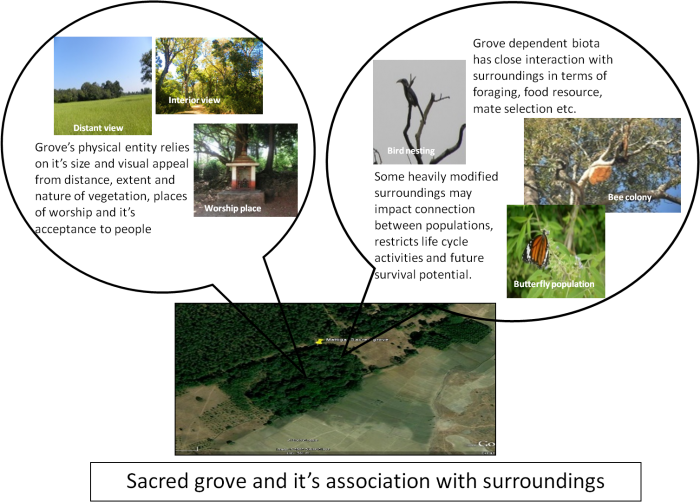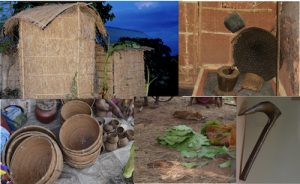Sustainability, a widely used term in socio-political and environmental atmosphere, carries a long history of debate, a tryst with acceptance and decline since its inception. The general meaning of sustainability is “meeting our requirements without compromising the requirement for future”. There exists a plurality of definitions for sustainability but the idea became popular after the publication of Brundtland Report “Our Common Future” in 1987 and prioritized in First Earth Summit in Rio in 1992. As expected, it emphasizes on an inherent balance between contrasting issues like resource use and savings, long term slow benefit opposed to faster visually appealing outputs and anthropocentric vs. holistic outlook etc. However, the term sustainability is more meaningful and approachable to people if it is coined with specific discipline of interest like economy (economical sustainability), politics (political sustainability), environment (environmental sustainability) etc. This article will focus on the concept of ecological sustainability and its relation with natural resource conservation highlighting pertinent issues while human act as major driving factor.
Ecological sustainability is pertinent with ecosystem functioning, inter-relation among its components and existing dynamics. Ecosystem, when is in proper balance (although theoretical) can survive on its own by following certain principles like multiplication, resistance, resilience, adaptation and evolution. However, sustainability comes to the scenario, when any of the key components (here it is human) cross the threshold either by number or actions and pose a threat to others. In a broader sense it implies certain disciplinary / corrective / alternative measures to mitigate the probable hazards generated from beyond capacity harmful activities and secure long lasting normal operations from ecosystem.
Natural resource conservation can be considered as a subset of sustainability concept. Natural resource means any kind of physical and biological elements on earth which has definite role in satisfying human demand. It includes a range of agency/factors like omnipresent sun, air, soil, water to localized ones like forest, mountain, rocks, minerals even biota with specific activities. Use and exploitation of natural resources are very much driven by cultural, socio-political and individualistic demands. Moreover, uprising of city-centric civilization, industrial revolution and technological advancement make the process faster and more detrimental. To combat with the situation, different proactive and reactive measures have been introduced worldwide which can be seen in the form of treaties (e.g Convention on Biological Diversity (CBD), Convention on International Trade in Endangered Species of Wild Fauna and Flora (CITES)), acts, rules and regulations (e.g. Forest Conservation Act, 1980, Govt. of India), guidelines (e.g. Sustainable sand mining management guideline 2016, , Guidelines for Human-Leopard conflict management 2011, Govt. of India.), protected area network, participatory activities etc.
Issues with ecological sustainability
In a broader sense ecological sustainability and resource conservation have common goal i.e., long term maintenance of natural resources and ecosystem functions and services. However, when these ideas are implemented in real life scenario several other equally important issues pop out intertwined with the core concepts. Taking ecological sustainability as an example, thorough understanding of the natural dynamics is a prerequisite here. Although much studied, our understanding of natural dynamics is restricted to visible members and their quantitatively measured activities in limited time and scale. For example, in a diverse agro-ecosystem, the visible parts are multiple crops, their human mediated management practices (e.g. sowing, manuring, growing, pest control, and harvesting), associated life forms (e.g. birds, insects, small mammals and even ground dwellers) and their activities (e.g. pollination, seed dispersal, food chain maintenance, nutrient cycling). The invisible/not-so-prominent parts are availability of nesting place for birds, effect of crop variation on pollinator communities, effect of pesticide on insects and ground dwellers, effect on ground water resource etc. The underlying natural dynamics operate with both visible and invisible parts at multiple time and scale which is hard to capture in a resource and time bound study. The problem becomes more diverse and interesting when stochastic mechanisms invade the system results into unpredictable and chaotic outcomes. Example can be taken for fire, cyclone, disease and human mediated mass destruction activities which are faster and widespread, sometimes even repetitive. The impact may be temporary so the system can get back to its original form, or moderate so there is coming back but with modifications/new forms, or devastative, so complete wipe out of the original members. To define or planning ecological sustainability in these cases is a challenging task if our understanding of basic mechanism is not deep rooted.

Apart from natural factors, anthropocentric attitude has a great role in shaping up the idea of sustainability and its implementation. Human as single entity or community both have decisive role in this regard. The individualistic approach seems to be less harmful but may turns detrimental if magnitude and technological advancement are considered. Examples can be drawn from numerous instances of privatization of natural resources where resource management strategy is governed by a handful of people and economic profit dominates the agenda. Similarly, community actions usually massive and difficult to control, but can be moderate if environmentally tuned practices can be implemented. In rural community, majority of the age old resource use practices are time tested and tuned with local environmental condition which help to maintain the balance between consumption and preservation. However, market invasion disrupted this age-old matrix considerably therefore, throwing challenge to develop new age practices based on contemporary socio-environmental scenario. The situation is different in urban area and its periphery where sustainability practice becomes more difficult due to ultra-diverse nature of the community in terms of behavior, culture, belief and life style. Therefore, optimization of ecological sustainability requires wider inclusion of stakeholders, flexible regulatory measures, incentive based practices and dynamic management strategy.
Issues with natural resource conservation
Compare to sustainability, idea of resource conservation, it’s principle and implementation are straightforward although multidimensional. The gradual change in resource conservation strategies from exclusive to inclusive format expands the scope for more participation, amiable solutions and social equity as evidenced from many studies. However, societal inclusion in the conservation diversify the scenario further. The positive side is environmental and resource awareness among people, wider acceptability of conservation agenda, proactive and reactive measures at various levels. The major constraining factor is human perception of natural resource management. Being a dominant component of the ecosystem, it is natural to maximize the profit out of it but this uncontrolled profit making business imbalance the entire framework, eventually leads towards zero balance.
Taking the example of species specific conservation programs, (tiger, elephant, primates etc.) it is argued that by conserving the large members their habitat and other associated life forms also benefited. Although the idea sounds logical, quantitative estimation of benefits on habitat and associated life forms are still scattered, therefore, impede us to make any sound conclusion. Moreover, species centric programs demand compromise from local communities in terms of livelihood, custodial and tenure rights which often subject to conflict with implementing agency. In habitat or ecosystem conservation agenda, often the focus is limited to the object of interest ignoring its association with surroundings. The statement can be further explained with the example of sacred grove conservation planning. Sacred groves are culturally protected forest patches usually present in semi-modified landscapes. Majority of the grove conservation works consider grove as single entity emphasizing on vegetation protection, reduction of disturbance etc. but hardly pay attention what is going around. Unless the link with surrounding area is not considered, conservation outputs are uncertain in terms of their longevity.

At regional scale, resource conservation strategy is heavily influenced by economic and political interest. They are the determining factors for what to conserve, how much and where. Globally, majority of biodiversity rich areas come under productive landscape thus instigating more economic and political involvement of major players. The tussle between development and conservation becomes more intense and it is evident that biodiversity has to compromise for greater interest of mankind. The phrase “greater interest of mankind” itself is a subject of argument as in majority of cases this greater interest is restricted to a handful of people while others are mere spectator of it. It is an established fact that the political and economic wings of the development often crashed the low key environment friendly subsistence life style of the local peasants in the name of advancement. To date, the consequences of these activities are not that impressive as it was thought at the beginning.
In conclusion, it can be said that implementation of ecological sustainability in resource conservation and livelihood development is a challenging task. However, this challenging task provides more opportunities for innovative strategies, sensible involvement from society, and redefining our role as a component of ecosystem rather than controlling it.
Further reading:
World Commission on Environment and Development (1987). Our Common Future. Oxford: Oxford University Press. p. 27. ISBN 019282080X
United Nations 2015. Transforming our world: The 2030 agenda for sustainable development
Elinor Ostrom. 2009. A General Framework for Analyzing Sustainability of Social-Ecological Systems. Science 24 Jul 2009: Vol. 325, Issue 5939, pp. 419-422. DOI:10.1126/science.1172133



